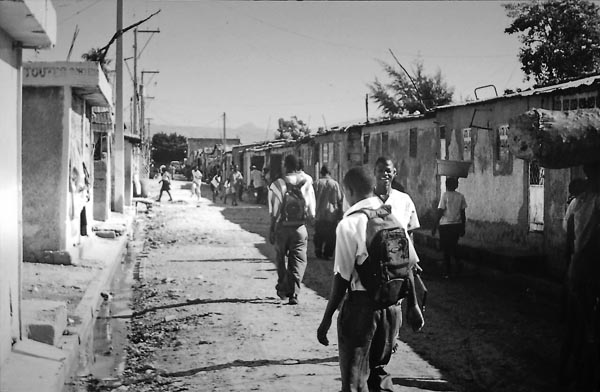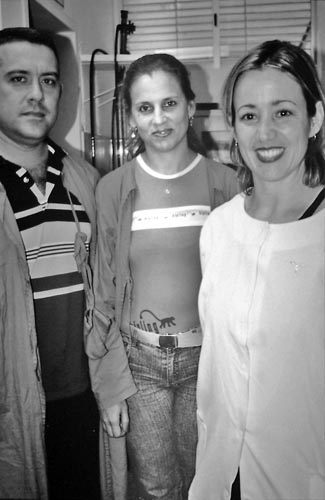While the European Union set about destroying the independence of nations, and the US attempted to do the same in Central and South America, a new debate was beginning. It centred on integration and cooperation – but on the basis of national sovereignty...
Together, but sovereign: how Latin America and the Caribbean are forging their own future
WORKERS, MAY 2012 ISSUE
All the wrath of the European Union is aimed at Argentina at the moment. As Argentine President Cristina Fernández de Kirchner announces plans to renationalise the Spanish owned oil company YPF, the Spanish parent company REPSOL threatens court action against Argentina around the globe. Unelected European Commission president Barroso threatens Argentina over investment agreements between the EU and Argentina, and Spain threatens industrial war against Argentina. And Catherine Ashton, the EU’s unelected foreign policy chief, cancelled a meeting of the EU/Argentina Joint Committee.
Argentina shrugs off these threats as it did the threats from the IMF, US and EU in 2002/03 when the country defaulted on its debts and told these august bodies that they would be paid only when Argentina decided. As if Spain and the EU are in a position now to wage industrial war!
Standing up
It’s not just Argentina. Many countries in Latin America and the Caribbean have learned how to stand up to the imperialists. It all started with the US government’s intention to set up the Free Trade Area of the Americas (FTAA) and to include every country in the Americas except Cuba. Broadly speaking, the FTAA would have led to the effective annexation of nation states by the USA. Its predecessor, the North American Free Trade Area, covered Canada, the USA and Mexico. Most Latin American nations had seen the experience of this “Free Trade agreement” in destroying agriculture in Mexico due to a subsidised US agriculture sector.
On 1 May 2001, Cuba launched its own campaign against the FTAA based on the slogan “Plebicito si, anexo no”, or “Referendum yes, annexation no”. In other words, let the people in each country decide for themselves. That’s the same as we wish for Britain and the EU. Cuban trade unions campaigned online, among other Latin American trade unions.

Street scene, Haiti: cooperation across Latin America and the Caribbean is seen as the key to tackling poverty both caused and ignored by the US.
Photo: Workers
Venezuela was next to join the campaign against the FTAA and the debate deepened across the continent. Mercosur, the trading group of the southern cone representing Brazil, Argentina, Uruguay, Bolivia, Chile etc, and CARICOM, the Caribbean trading group, took up the debate.
The game changer was Venezuela’s proposal to establish ALBA, the Bolivarian Alliance of our America, as a direct alternative to the FTAA. The concept was immediately supported by Cuba and Bolivia. ALBA would establish a host of cooperation projects in the field of energy, health, media, education, literacy and trade.
Originally, ALBA comprised only Venezuela and Cuba, but they were later joined by Bolivia, Nicaragua, Dominica, Antigua & Barbuda, Saint Vincent & the Grenadines, and Ecuador with Haiti and Paraguay indicating their intention to join. ALBA established the ALBA Bank to assist its members and introduced a trading currency, the Sucre.
The southern cone countries decided to establish a Bank of the South as an alternative to the IMF with $20 billion of assets. Venezuela, also one of the countries party to the decision to set up the Bank of the South, has proposed that members of the Bank of the South leave the IMF after the bank is established.
Sovereignty
Perhaps the most significant development was the opening of a debate across Latin America and the Caribbean about the concept of integration, not on the basis of the EU or FTAA, but based on Simón Bolivar’s concept of a united Latin America with national sovereignty at its heart. This debate has included those countries outside of ALBA. There has been general agreement across Latin America and the Caribbean that they should become independent of the USA in terms of trade and finance.

One thing common to every country in the region – Cuban doctors.
Photo: Workers
This development led to a summit of the various interregional organisations held in Mexico in February 2011 which built on the experiences of all the those organisations and formally established the Community of Latin American and Caribbean States (CELAC) representing all countries on the continent with the explicit exclusion of the USA and Canada. CELAC’s combined GDP puts it in third position in the world, and with a population of 600 million, the world’s largest oil reserves and the first and third global producer of food and energy respectively, it is understandable that confidence levels are so high.
A first CELAC summit was held in Caracas in December 2011 and Cuba, which had been excluded from the Organisation of American States since 1962, was selected to host the 2013 summit while being a member of the “troika” of Cuba, Venezuela and Chile that will lead the organisation. In fact, CELAC’s President for 2013 will be Raul Castro.
Another summit was held in April 2012 in Cartagena, Colombia, scheduled to launch the FTAA. In fact this marked its death knell, with countries calling on Obama to support Argentina over the Malvinas Islands and condemning the USA for continuing to try to isolate Cuba. Oh! How times have changed!
This movement is wider than leaders and inter-regional trade groupings. Trade unions have been actively organising to be in advance of these developments. In February 2011 Cuba’s trade union centre, the CTC, hosted the first “Train the Trainers” educational process for union members from across the continent at its trade union school in Havana. The objective was to raise political and working class awareness across the trade unions of Latin America and the Caribbean, particularly among trade unions in the ALBA countries.
Keeping pace
Some trade unions were not keeping pace with the social and political developments in the ALBA countries. The activists were trained to go back to their countries and organise similar programmes for their own trade union activists. Through this process more political training programmes were developed at events in Nicaragua, Brazil, Mexico and Chile, each with participation from across the continent.
All these developments seem to have passed Cameron by. They put his stand over Las Malvinas, or Falkland Islands as he prefers to call them, into a different perspective. He is not dealing with a tin pot military Argentinian dictator like Galtieri, but a president who won 54 per cent of the vote in the last election (which puts the Tory vote to shame). Cameron is dealing with a country that, like any other, wants sovereignty over its natural resources including those offshore. Argentina is a country that is part of a group of 33 nations who have broken free from one country with imperial designs over the sub-continent and who will not tolerate another’s challenge to their national and resource sovereignty.
Cameron sent HMS Dauntless to the area. This is the most powerful warship in the world, described by a boasting Royal Navy spokesman as capable of “destroying every plane at every Latin American airbase before they could get off the ground”.
What did Cameron think the response would be? How would this be perceived across Latin America and the Caribbean? Speaking at a ceremony to mark the 30th anniversary of the war, Argentinian President Cristina Fernández de Kirchner said of Cameron’s stance, “Every day that goes by it looks more ridiculous, more absurd in the eyes of the world. It is an injustice that in the 20th century there are still sixteen colonial enclaves around the world, and ten of those belong to the United Kingdom.” ■